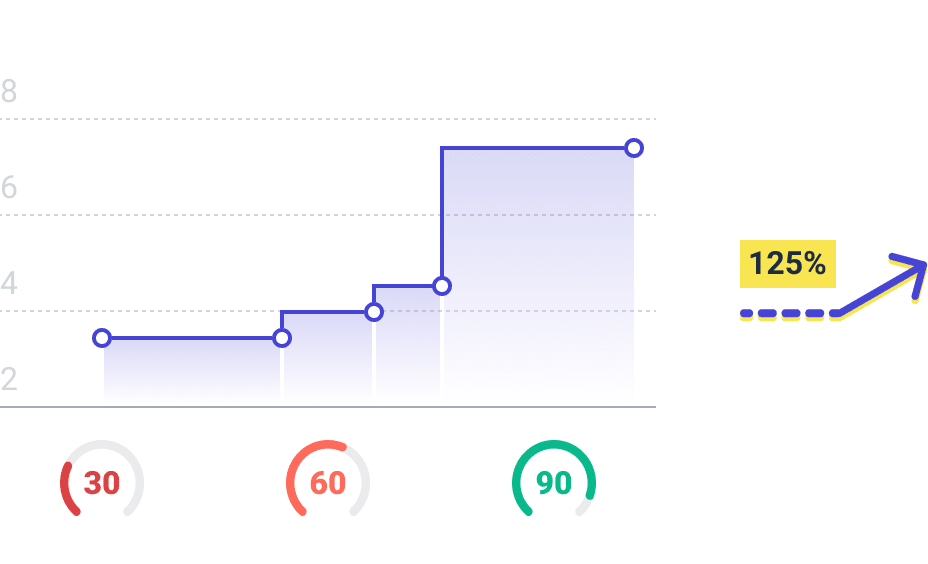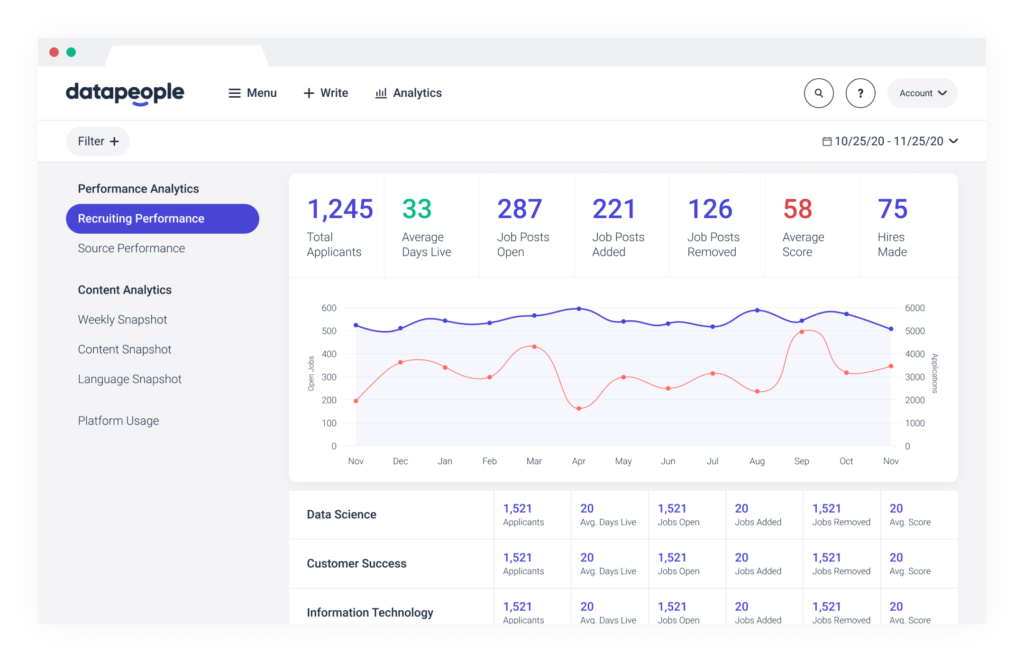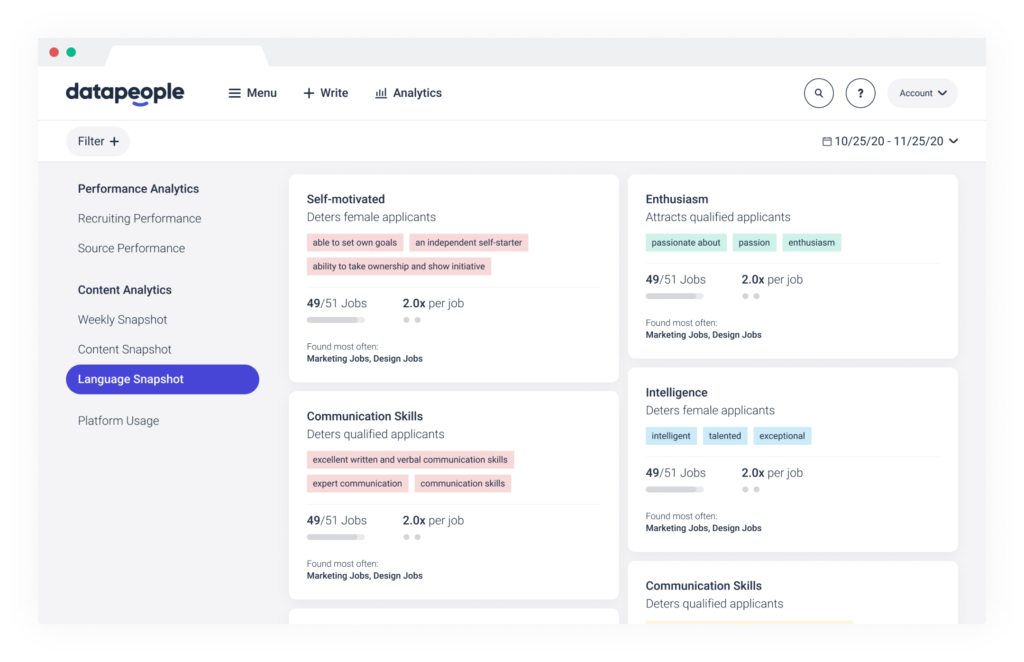
How BuzzFeed Uses Datapeople To Attract 125% More Qualified Applicants
BuzzFeed was founded in 2006 as an algorithm-driven lab without writers or editors. Since then, they’ve grown into an international media powerhouse. In fact, they’ve received numerous awards including the National Magazine Award, the George Polk Award, and the Michael Kelly Award. They were also shortlisted for the Pulitzer Prize.
Today, BuzzFeed has 1,300 employees located in offices across 18 cities in 9 countries. They’re passionate about inclusion and hire hundreds of new employees each year.
Challenge
BuzzFeed’s distributed recruiting team was struggling to keep up with the high volume of applications they receive, sometimes over 1,000 per day. And while the number was high, the candidates weren’t always a good fit for the positions. As a result, BuzzFeed was looking for a solution that would do three things:

Improve applicant quality
Thoughtful job content can improve the quality of applicants who find and apply for jobs.

Also, maximize inbound funnels and reduce the use of sourcing
Attracting higher quality candidate pools reduces cost and also time spent sourcing candidates.

And attract more qualified female candidates to technology jobs
Improving female representation in candidate pools increases the chances of hiring a female candidate.
Solution
BuzzFeed recruiters now collaborate on job descriptions using Datapeople, with a goal of only posting jobs that score at least 85+. So far, their jobs are attracting substantially more qualified applicants overall. Also, more women are applying for their engineering and data science positions. A hiring process that was once stressful and time-consuming is now, consequently, quicker and easier.

BuzzFeed’s high-scoring jobs attract 125% more candidates qualified enough to receive an interview.
BuzzFeed attracts a higher quality talent pipeline
Jobs scoring 85+ attract 125% more organic candidates who make it to the interview stage. (Organic applicants are candidates who apply via a company’s career page or from job search engines like Indeed and LinkedIn.) This is significant because BuzzFeed doesn’t have a problem when it comes to attracting applicants. In fact, their career site receives hundreds of thousands of applications every year. Rather, their problem was that too many people were applying for jobs that didn’t fit their skill set. So improving the overall quality of their job descriptions is a big deal.

BuzzFeed’s high-scoring jobs attract 50% more candidates qualified enough to receive a phone interview.
BuzzFeed is hiring more organic candidates
Direct sourcing is time-consuming and expensive. Accordingly, more organic applicants and fewer sourced applicants is a good thing. Since implementing Datapeople, BuzzFeed has been able to source fewer candidates while filling roles at the same rate, thus saving money. In fact, BuzzFeed’s recruiting team has seen their number of sourced applicants decrease by 50%.
“Datapeople has brought a lot of clarity to our hiring teams and also helped us understand how candidates find and experience job descriptions. We’ve seen huge increases in both the quality and diversity of candidates who apply to our jobs.”
– Dan Geiger, Manager, Recruiting Operations
Poorly calibrated job descriptions attract a less diverse candidate pool. They can also create a ‘confidence gap,’ where candidates won’t apply without full confidence that they meet all requirements.
Datapeople’s Skills and Title Guidance helps you avoid creating confidence gaps. It ensures your jobs have correct titles and also appropriate requirements.
When BuzzFeed’s jobs score 85 or higher, they attract 40% more women applicants. They also bring in 100% more women who reach the phone screen stage.
40%
▲
BuzzFeed’s high-scoring engineering jobs attract 40% more female candidates.
100%
▲
BuzzFeed’s high-scoring engineering jobs also attract 100% more qualified female candidates.
BuzzFeed uses Datapeople Analytics to see and measure results
Datapeople’s comprehensive analytics suite is helping BuzzFeed monitor and correct issues with their talent pipeline.

Job Performance Report
Datapeople’s Job Performance Report contains tons of actionable data. With it, you can track and measure the health of your pipeline at the company, department, and also job level. Additionally, you can filter by department, job seniority, date, and kind. Then, you can run weekly or monthly reports to find out if you’re on the right track.
Language: Semantic Usage
Datapeople’s Language Report gives you a detailed look at the language you’re using in your job descriptions. With that, you can determine how it might be affecting the diversity and also the quality of your candidate pool.

Try Datapeople
Want to see for yourself how easy it is to consistently write job posts that attract more diverse and qualified candidate pools – and make your entire hiring process more fair and efficient? Schedule a demo of the Datapeople platform and we’ll show you around.